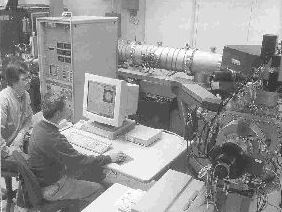© 2005 Ken Glasziou
© 2005 The Brotherhood of Man Library
| Creationism, Evolution, and The Urantia Book | Volume 12 - No. 3 — Index | Why is it necessary for there to be error in The Urantia Book? |
Zircons are tiny crystals that form in certain kinds of rocks. They are extremely durable and have a remarkable capacity to record many geological events by adding further growth shells to their surface while still preserving intact the core of the crystal. And because they contain the long-lived radio-active element, uranium, they also contain an inbuilt clock by which the various shells within the crystal structure can be accurately dated.
To obtain a detailed geochronology of a specimen, ultra-thin slices of the zircon are cut and subjected to various techniques of measurement. Quantitative micro-analysis of the zircon’s elements may be done with an electron microprobe which uses a narrow beam of electrons that causes the various atoms to emit X-rays of characteristic wavelength. Isotopic composition can be determined with an ion probe or alternatively, with a tiny beam of oxygen ions directed at parts of the zircon to analyze for their uranium and lead isotope content from which to date each spot and so dissect the zircon’s history.
How accurate are the results? Depending on the history of the rock, it can be dated with an accuracy of a few hundredths of a percent of its age–that is plus or minus one million years out of three billion.
These are the kind of techniques used by modern science to reliably date important events–for example, the history of earth-moon relationships as provided in the following article.


¶ References
- “Earth: Inside and Out” Edmond A. Mathez, Editor (2001) The New York Press N.Y.
¶ External links
| Creationism, Evolution, and The Urantia Book | Volume 12 - No. 3 — Index | Why is it necessary for there to be error in The Urantia Book? |